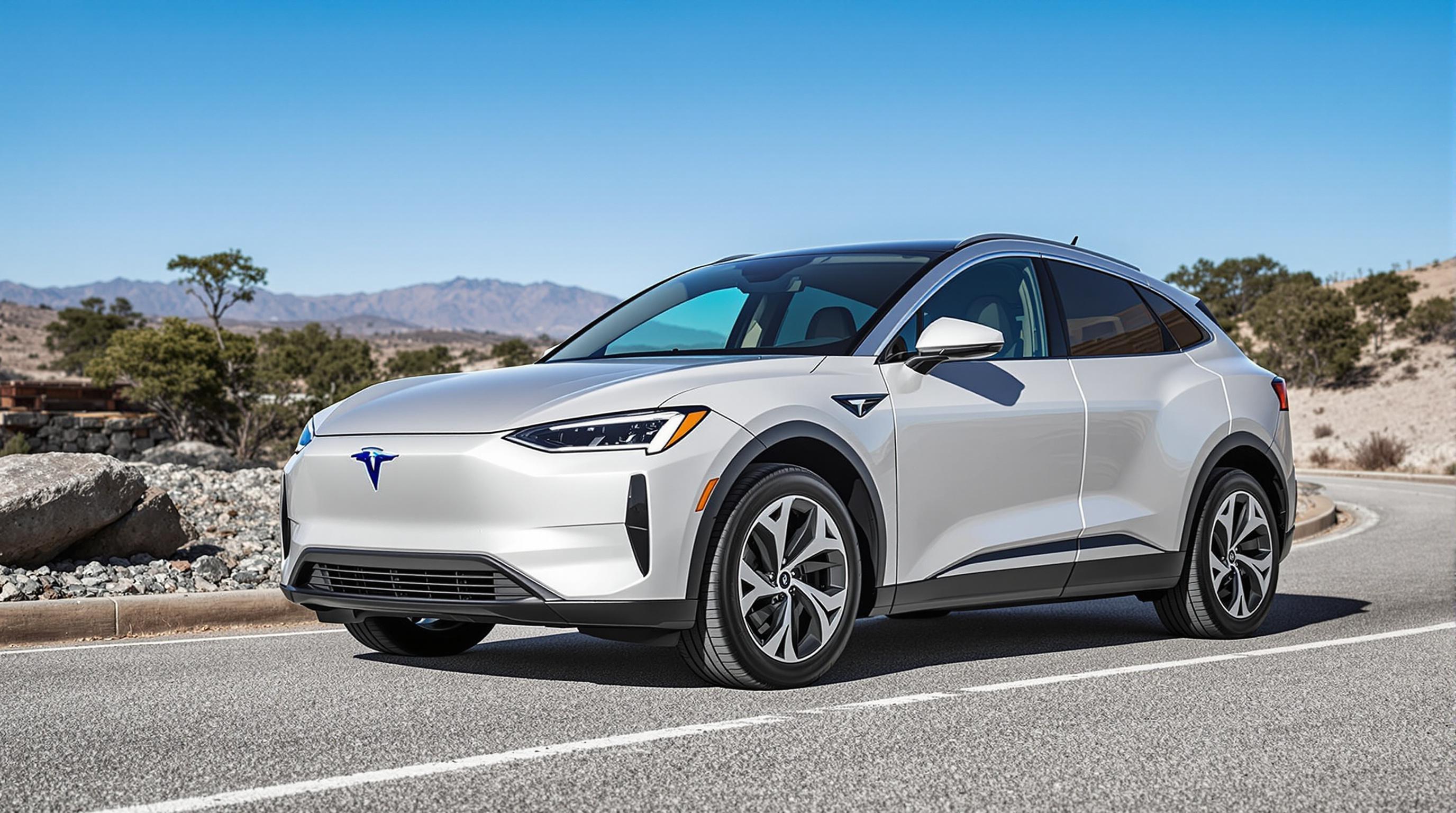Related Articles
- Unveiling the Unthinkable: How Your Social Media Posts Could Impact Your Car Insurance Premiums
- "From Showroom to Social Media: How Dealerships are Becoming Digital Storytellers in 2023"
- "From Showroom to Stream: The Rise of Virtual Reality Test Drives at Dealerships"
- Revving Up Sales: How Virtual Reality is Transforming the Dealership Experience for Shoppers and Sellers Alike
- Selling Experiences: How Dealerships Can Transform into Immersive Automotive Entertainment Hubs
- The Surprising Impact of Your Credit Card Habits on Car Financing: What You Didn't Know!
"Uncovering the 'Green Car Dilemma': The Hidden Costs Behind Eco-Friendly Vehicle Purchases"
"Uncovering the 'Green Car Dilemma': The Hidden Costs Behind Eco-Friendly Vehicle Purchases"
As the demand for eco-friendly vehicles surges, it's essential to peel back the layers of the so-called "green car dilemma," revealing the hidden costs that come with these seemingly sustainable options. From manufacturing impacts to battery disposal, this article explores the broader implications of going green on the road.
Understanding the Allure of Eco-Friendly Vehicles
Picture this: you’re walking down the street, and you spot a sleek, shiny electric vehicle (EV) parked by the curb. You feel a twinge of envy—after all, you're doing your part for the environment, right? The allure of eco-friendly vehicles is undeniable, and the statistics support it. According to the International Energy Agency, sales of electric vehicles have ballooned to 6.6 million globally in 2021, reflecting the growing commitment to a sustainable future (IEA, 2022).
A Prize That Comes with a Price Tag
However, before you dash to your nearest dealership, let’s delve into the lurking costs. First off, the sticker price of an EV is often significantly higher than that of traditional gasoline vehicles. For instance, while the average U.S. passenger vehicle costs about $47,000, many electric models start at $56,000 or more (Kelley Blue Book, 2023). You might think—what’s an extra $9,000 for saving the planet? But let’s dig deeper.
The Production Puzzle
Did you know that manufacturing an electric car creates approximately 70% more carbon emissions than a conventional gasoline vehicle? This is largely due to the energy-intensive process of extracting lithium and cobalt for batteries (Transport & Environment, 2021). Therefore, while your zero-emission car is kind to the air it breathes on the road, its life cycle might tell a different story.
The Grey Area of Battery Lifecycle
Now, let’s pivot to another critical aspect of the green car dilemma: the life cycle of batteries. Batteries in electric vehicles (EVs) make them run efficiently—until they don’t. Car batteries generally last between 8 to 15 years depending on usage and technology. But what happens afterward? Currently, about 95% of lithium-ion batteries end up in landfills, posing serious environmental hazards (World Economic Forum, 2022). That’s some waste that most eco-conscious buyers probably didn’t anticipate.
The Recycling Reality
There’s good news: battery recycling technology is on the rise. Companies like Redwood Materials are pioneering methods to recover materials from old batteries to be reused in new ones. However, the recycling process is still not widespread. In fact, only about 5% of lithium-ion batteries are presently being recycled in the U.S. (U.S. Department of Energy, 2023). So, while you may think you’re making a green choice, your vehicle's battery may still be contributing to the problem.
Spotlight on Charging Infrastructure
Another often overlooked aspect of owning an eco-friendly vehicle is the charging infrastructure. While you might assume that charging stations are as ubiquitous as Starbucks, the truth is quite different. More than 80% of EV owners charge their vehicles at home, which requires a dedicated electrical upgrade that can cost anywhere from $500 to $2,000 (U.S. Department of Energy, 2023). Plus, not everyone has easy access to such upgrades, particularly renters.
The Energy Debate
Moreover, the question of whether the power source for these electric cars is truly “green” arises. In regions heavily reliant on coal for energy production, the environmental cost may still be high. According to the U.S. Energy Information Administration (EIA), about 20% of the nation's electricity comes from renewable sources as of 2021, leaving a significant portion powered by fossil fuels (EIA, 2021). So, is the electricity fueling your green ride as clean as you think? It's time for some scrutinizing.
Sustainability Beyond the Vehicle
Switching gears to a broader perspective, let’s discuss urban sustainability. Eco-friendly cars can encourage urban sprawl—even if they lessen emissions on the road. With the rise of remote work, many people are seeking homes in distant suburbs where they can embrace the “green” lifestyle, but commuting distances have grown attendant with dependence on cars, leading to more road congestion and pollution (Journal of Environmental Psychology, 2022). Essentially, your switch to a greener car might be paving the way for less sustainable living.
Taking Responsibility: Ownership Beyond Purchase
Ownership doesn't stop at the car dealership. It extends into our driving habits and daily choices. Think about it—are you regularly skipping car washes to conserve water? Do you plan your trips meticulously to avoid unnecessary rounds? Each of these actions can contribute to a more sustainable lifestyle and lessen the environmental impact of your vehicle. After all, when it comes to emissions, it's about the overall use rather than just the car itself.
Case Study: Norway's Electric Revolution
Norway presents a fascinating case study in the green vehicle phenomenon. With tax incentives that significantly decrease the upfront costs of obtaining an electric vehicle, as well as numerous perks like free tolls, the country has seen about 54% of all new cars sold in 2021 being electric (Norwegian Road Federation, 2022). Yet, they face challenges, primarily in terms of how to manage the rising demand for electricity sustainably and the impact on urban infrastructure.
A Call For Transparency
For potential buyers, the crucial lesson comes clear: demand more transparency on the overall eco-impact of any vehicle purchase. While electric vehicles show a great potential for reducing emissions, we need better data and practices regarding battery lifecycle, manufacturing processes, and energy sourcing to ensure true sustainability. Don't just buy a car because it looks cool—understand how it fits into the bigger picture.
The Final Word: A Fork in the Road
As a millennial who's witnessed the rise of eco-consciousness in my lifetime, I often think about our trajectory moving forward. The choice to purchase a green vehicle should be a multifaceted decision, blending personal ethics with environmental realities. It might be easier to simply chalk it up to driving an electric car as “saving the planet,” but it is essential to remember the nuanced impacts of our choices.
Investing in the Future
Ultimately, the "green car dilemma" serves as a timely reminder that being environmentally responsible spans beyond the vehicle in your garage. The future relies on collective action—think about investing in public transport or support legislative efforts for renewable energy. If we are to realistically combat climate change, the path involves more than just personal vehicle swaps; it’s an infrastructure overhaul and a societal shift.
So, What’s the Takeaway?
Buying an eco-friendly vehicle seems like the right choice on the surface, but the hidden costs and implications are profound. We need more dialogue and transparency concerning these vehicles’ entire lifecycle and their real-world impacts. After all, the road to sustainability is paved with informed choices—not just good intentions.
The Road Ahead
As you decide your next automotive investment, keep in mind that whether you’re 16 or 70, every choice counts. Let’s collectively work towards not just greener vehicles, but a greener framework upon which our lives can thrive.





